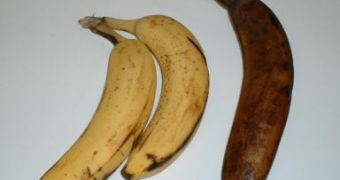The dream of many producers is to obtain naturally long lasting fruits. Until that dream becomes reality, they will fill the fruits with all kinds of additives to look healthy and fresh, even if they stay on the shelf for months.
But what makes apples (and other fruits) go brown when cut or bruised? From that very moment on, the oxygen has free access to the plant tissue. In the presence of oxygen, polyphenol oxidase (PPO) enzymes in the chloroplasts rapidly oxidize phenolic chemicals naturally encountered in the fruit tissues to o-quinones. These chemicals interact with amino acids from proteins or they self-assemble to form brown polymers.
But this reaction is not the same in all fruits, since PPO activity and the amount of the phenolic chemicals can vary between different fruit varieties. PPO presence can also present variations linked to growing conditions and fruit maturity.
Fruit varieties that are less susceptible to brown coloration either have decreased PPO activity or lower phenolic amounts. Browning can be impeded by either decreasing PPO oxidation activity or the quantity of phenols. Coating freshly cut apples in sugar or syrup can decrease oxygen diffusion, speeding down the reaction. Lemon or pineapple juices, rich in antioxidants, slow enzymatic browning when the apple is peeled. The acidity of these fruits also inhibits PPO activity.
Heating in boiling water for 4-5 minutes can also turne down PPO enzymes, but also affect the product's texture. PPO, which is a mix of monophenol oxidase and catechol oxidase enzymes, is encountered in almost all plant tissues, but also in bacteria, animals and fungi.
But the browning process of the plant tissues is not as bad as you might think: the brown color of tea, coffee and cocoa is due to the PPO enzymatic browning during processing.

 14 DAY TRIAL //
14 DAY TRIAL //